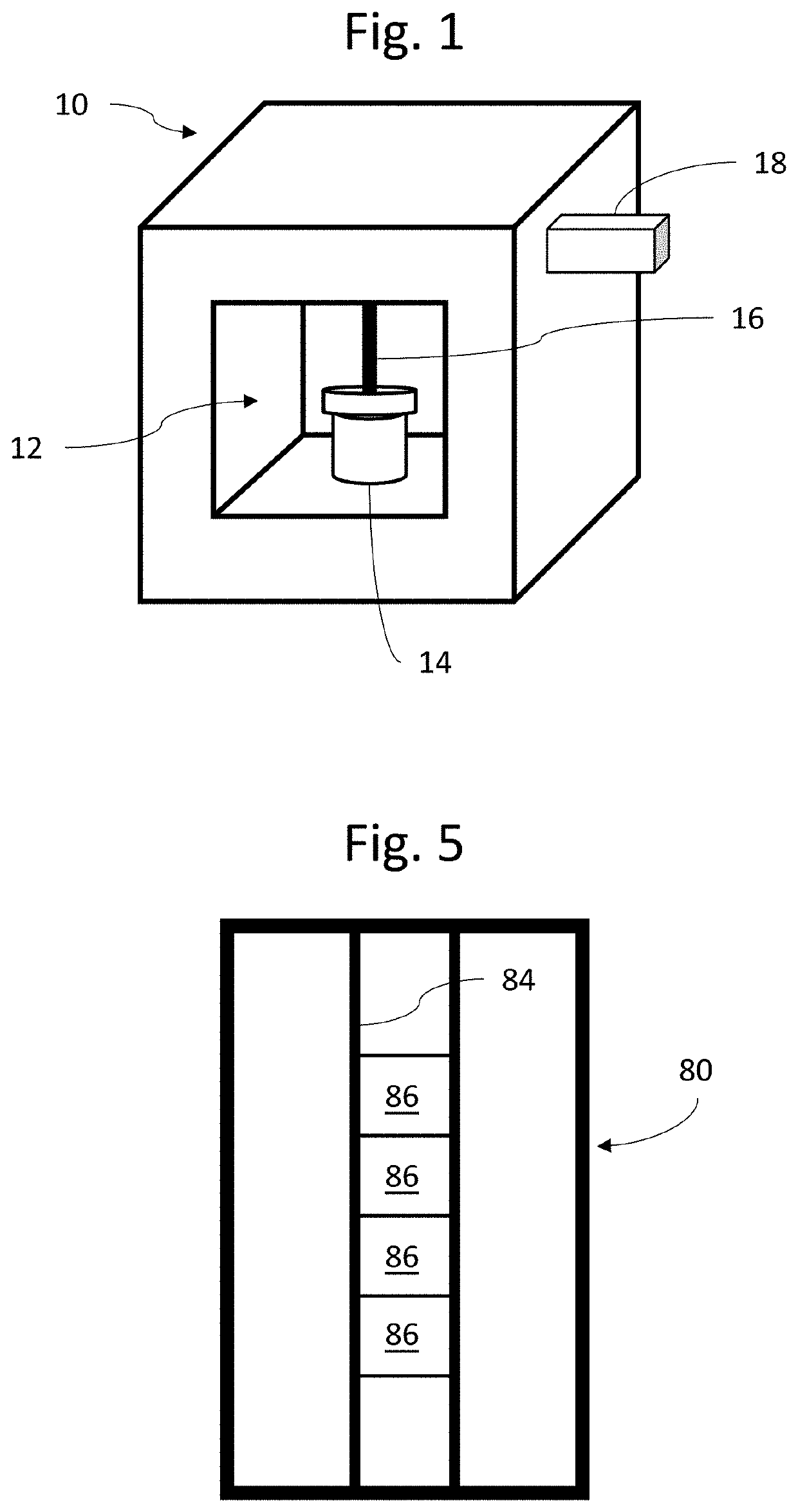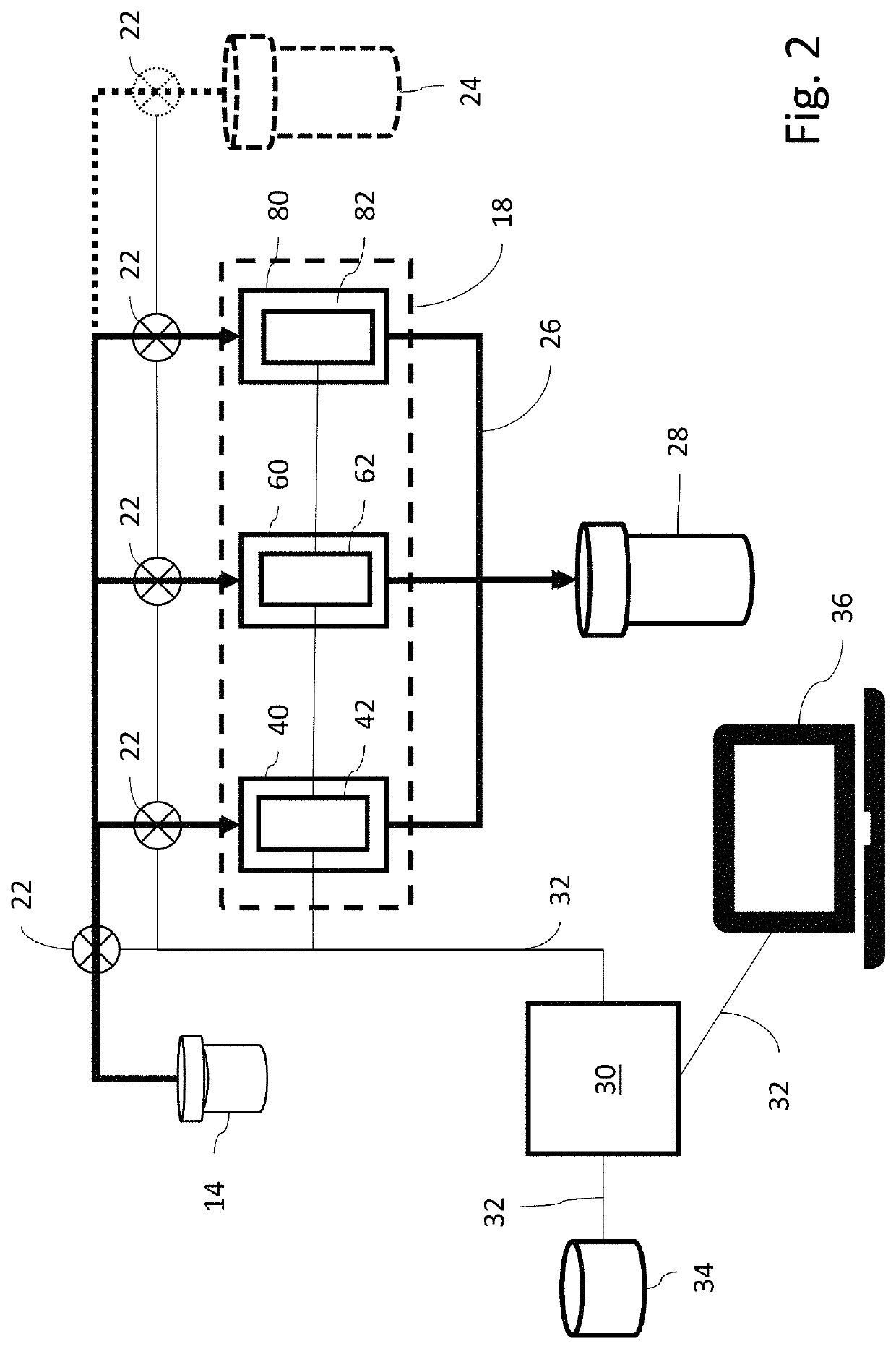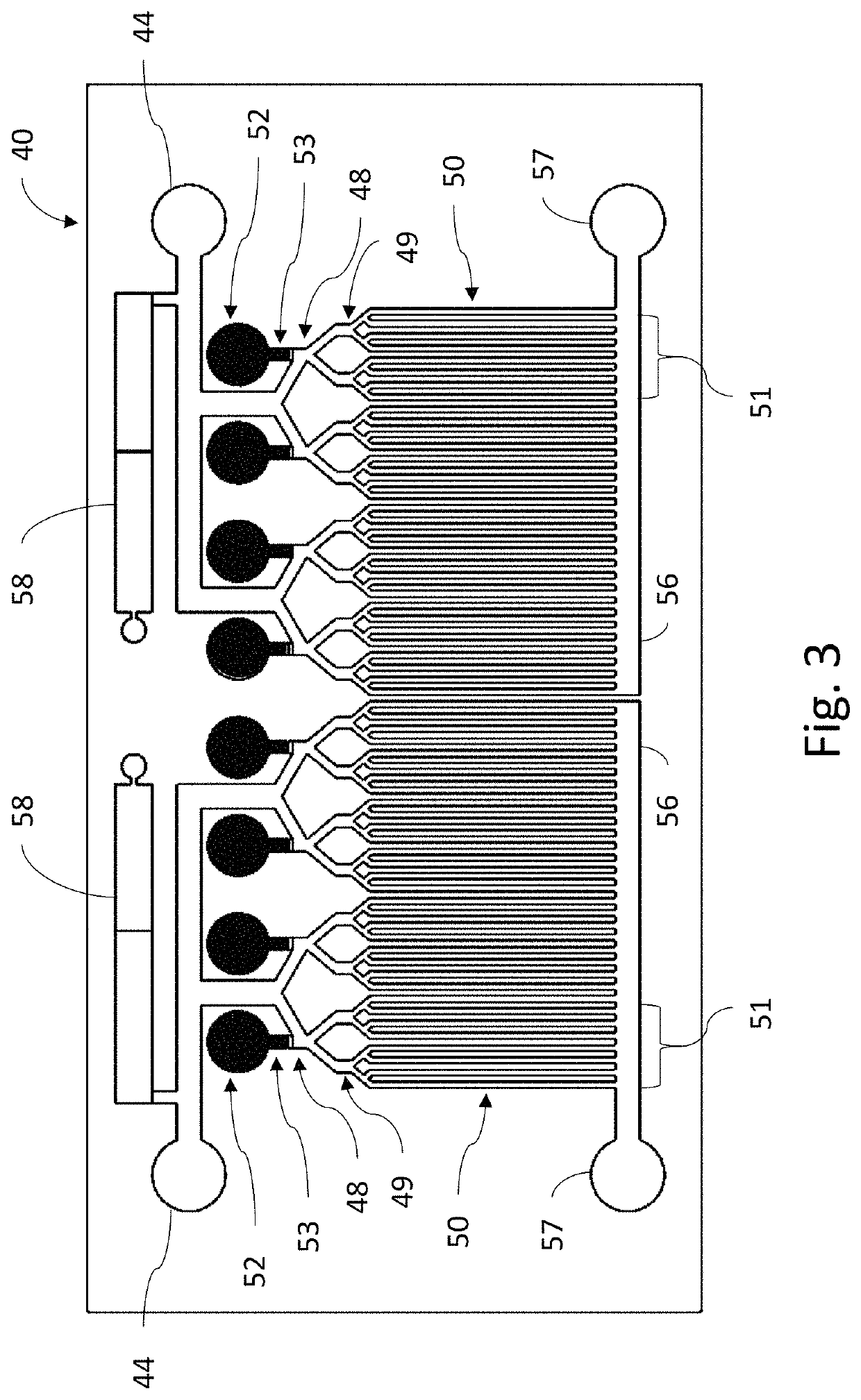System for microbial species detection, quantification and antibiotic susceptibility identification
a technology for identifying systems and microbial species, applied in biochemistry apparatuses, instruments, laboratories, etc., can solve problems such as surprisingly limited number and very far from reality, and achieve the effects of improving treatment, low cost, and high volume of tests
- Summary
- Abstract
- Description
- Claims
- Application Information
AI Technical Summary
Benefits of technology
Problems solved by technology
Method used
Image
Examples
Embodiment Construction
[0037]As shown in FIG. 1, a first embodiment according to the present invention includes a system 10 having therein a sample receiving area 12. A urine sample vial 14 containing urine received from a patient can be placed in the sample receiving area 12. The system 10 further includes a sample withdrawal pipette 16 which can be inserted into the urine sample vial 20 to withdraw urine therefrom. The system 10 also includes a cartridge 18 replaceably insertable into the apparatus 10, which contains microfluidic chips to be further described below.
[0038]Referring now to FIG. 2, cartridge 18 contains three microfluidic chips, a microbe detection chip (MDC) 40, an antibiotic susceptibility chip (ASC) 60 and a urinalysis chip (UC) 80. The sample withdrawal pipette 16 is connected via sample distribution lines 20 to provide urine samples to each of the microfluidic chips 40, 60, 80. Flow of sample from the vial 14 to the chips 40, 60, 80 is controlled by a series of pumps 22. If desired, v...
PUM
 Login to View More
Login to View More Abstract
Description
Claims
Application Information
 Login to View More
Login to View More - R&D
- Intellectual Property
- Life Sciences
- Materials
- Tech Scout
- Unparalleled Data Quality
- Higher Quality Content
- 60% Fewer Hallucinations
Browse by: Latest US Patents, China's latest patents, Technical Efficacy Thesaurus, Application Domain, Technology Topic, Popular Technical Reports.
© 2025 PatSnap. All rights reserved.Legal|Privacy policy|Modern Slavery Act Transparency Statement|Sitemap|About US| Contact US: help@patsnap.com



